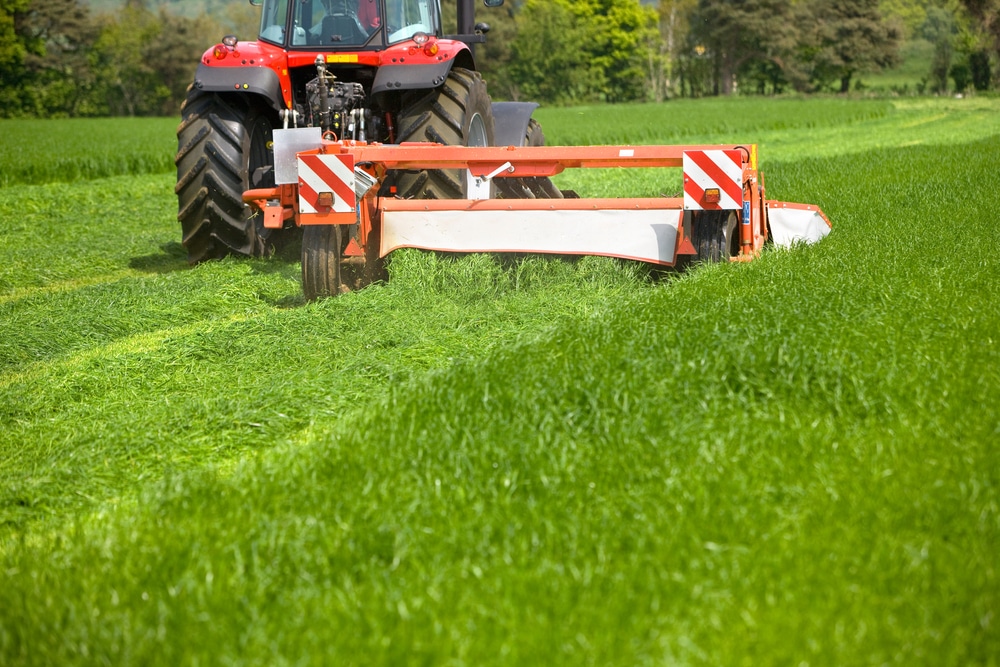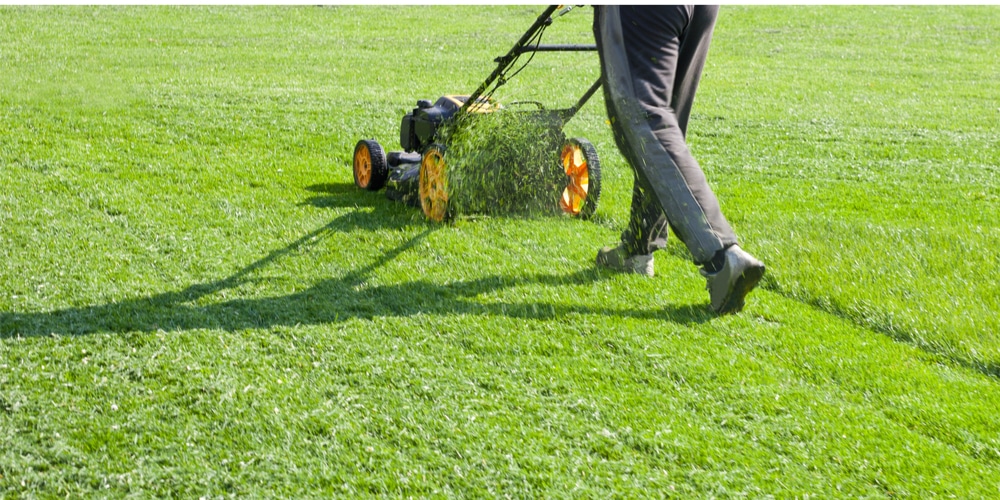Essential Lawn Equipment Calibration for Spring
Spring is the perfect season to ensure your lawn care equipment is in top-notch condition. Here’s a concise guide on what to calibrate:
Lawn Mowers: Your mower must be calibrated for optimal cutting heights and blade sharpness to ensure healthy grass growth. A well-maintained lawn mower also means precise cuts and less wear on the machine.
- Blade Sharpness: Ensure blades are sharp for a clean cut.
- Height Adjustment: Calibrate cutting height to suit grass type and season.
Sprayers: Whether it’s for pesticides or fertilizers, a properly calibrated sprayer is crucial for even application and preventing damage to your lawn. You should enter a calibration mode or manually trigger the sprayer to test and adjust the flow.
- Nozzle Flow: Check and clean to prevent blockages and ensure even spray patterns.
- Calibration Mode: Utilize to adjust to the appropriate application rate.
Spreaders: Accuracy is key to distribute granular products like fertilizer and seed. Incorrect calibration can lead to over or under-application, which may negatively impact lawn health.
- Flow Rate: Adjust the spreader to release the correct amount of product.
- Distribution Pattern: Ensure even coverage across your lawn.
How to Calibrate Common Lawn Equipment
Before diving into specific calibration procedures, keep in mind that precision in calibration ensures your lawn maintenance equipment operates effectively and delivers optimal performance. Calibration not only maintains the health of your lawn but also contributes to the longevity of your equipment.
Lawn Mower Calibration
- Blade Sharpness: Ensure your mower’s blades are sharp. Dull blades tear grass, leading to an unhealthy lawn.
- Cutting Height: Adjust the cutting height to match the recommended level for your grass type; usually, this is about 2.5 to 3 inches tall to promote healthy roots.
Sprinkler System Calibration
- Spray Patterns: Check and adjust spray patterns to cover your lawn evenly without overspraying onto pavements.
- Flow Rate: Measure your system’s flow rate. This usually involves capturing water from each sprinkler head for a set amount of time and measuring the volume.
Fertilizer Spreader Calibration
- Spread Rate: Determine the appropriate spread rate for the fertilizer being used, which is often listed on the product packaging.
- Coverage Check: Mark off a test area of known dimensions. Apply fertilizer within this area to ensure even distribution before tackling the entire lawn.
Safety Precautions During Calibration
When calibrating your lawn equipment this spring, it’s essential to prioritize your safety to prevent any accidents. Here are the safety precautions you should take:
- Personal Protective Equipment (PPE):
- Wear safety glasses to protect your eyes from splashes.
- Use rubber gloves to shield your hands from harsh chemicals and detergents.
- Consider long-sleeved shirts and long pants to cover exposed skin.
- Tools and Environment:
- Make sure you have a clean and organized workspace to avoid tripping or mishandling equipment.
- Verify that all calibration tools are functioning correctly before use to ensure accurate measurements.
- Chemical Handling:
- Approach chemical handling with caution, even if just using water for calibration — adopt the same safety standards as though you were handling actual pesticides.
- Ensure to use clean containers and properly dispose of any waste.
- Equipment Use:
- Familiarize yourself with the equipment’s manufacturer guidelines for proper calibration steps and safety tips.
- Test equipment first with water before applying actual products to prevent misapplication.
Additionally, here are a few steps for a smooth calibration process:
- Prepare: Gather all your supplies and PPE before starting.
- Measure: Use precise measuring devices for accuracy.
- Test: Perform a dry run to catch potential issues.
- Apply: Begin with water to confirm the output rate.
- Adjust: Make necessary adjustments to reach the desired application rate.
- Document: Keep a record of the calibration settings for future reference.
Maintenance Post-Calibration
After calibrating your lawn care equipment, proper maintenance is essential to ensure that your tools continue to operate at their peak efficiency throughout the season. Here’s what you should focus on post-calibration:
- Inspect Regularly: Make sure to periodically review all calibrated parts for wear and tear.
- Check nozzles for blockages and damage.
- Examine hoses and connections for leaks or weaknesses.
- Clean Thoroughly:
- Remove any debris or buildup that may have accumulated on your equipment. A simple mixture of soap and water often does the trick.
- For spreaders, ensure the application holes are clear of granules.
- Record Keeping: Document each maintenance and calibration event.
- Date of maintenance
- Details of any parts repaired or replaced
- Future scheduled maintenance dates
- Storage: Store your equipment in a protected environment to prevent rust and corrosion.
- Keep devices in a dry, temperature-controlled space.
- Cover machinery to protect from dust and pests.
- Re-Calibration Alerts:
- Set reminders for the next re-calibration to stay on top of your equipment’s needs.
Essential Checks:
- Sprayer Tanks: Rinse out any chemical residue; leftover chemicals can corrode or clog your sprayer system.
- Spreader Settings: Re-evaluate spreader settings to match product application rates; make adjustments as needed due to changes in weather or lawn conditions.
Quick Reference Table:
| Equipment | Maintenance Task | Frequency |
|---|---|---|
| Sprayer | Nozzle Inspection | Weekly |
| Spreader | Hopper Cleaning | Bi-Weekly |
| Mower | Blade Sharpening | Monthly |
Alignment: Ensure equipment alignment remains true, especially in multi-nozzle sprayers which can be thrown off by jostling or bumps.
Frequently Asked Questions
Calibrating your lawn care equipment is crucial for maintaining a healthy and attractive lawn throughout the spring. Each tool has its specific calibration needs that, when met, ensure efficiency and effectiveness.
How often should I calibrate my lawn mower for optimal spring performance?
- Calibrate your lawn mower at least once as the spring season begins. Consider calibrating it more frequently if it experiences heavy use.
The Importance of Properly Calibrating Lawn Care Equipment recommends meticulous calibration before the start of the season and not relying on last year’s settings.
What steps are involved in calibrating a sprinkler system for the spring season?
- Check and adjust the sprinkler heads to ensure even coverage.
- Measure and log the output of each zone to fine-tune watering times.
For a healthy spring lawn, it is suggested to water the grass early in the morning to reduce the risk of fungal diseases.
Are there specific calibration requirements for fertilizer spreaders in springtime lawn care?
- Verify the spreader’s settings match the product’s recommended application rate.
- Conduct a test pass over a measured area to ensure accurate distribution.
Which garden tools require calibration before starting spring landscaping work?
- Tools that dispense products, such as sprayers, should be calibrated.
- Equipment like pruning shears may not require calibration, but they should be sharpened and maintained.
Can you outline the process for calibrating soil pH testing equipment for spring gardening?
- Check the pH meter against a standard solution with a known pH value.
- Adjust the calibration knob to match the reading with the standard solution’s pH.
What calibration checks should be performed on a lawn aerator at the onset of spring?
- Confirm the depth setting to ensure adequate soil penetration without harming the grass roots.
- Inspect for uniform tine spacing and wear to maintain consistent aeration.

